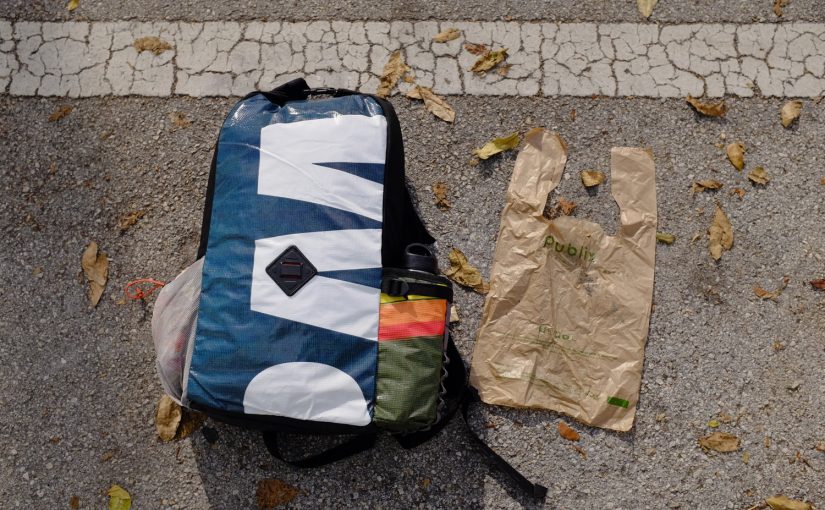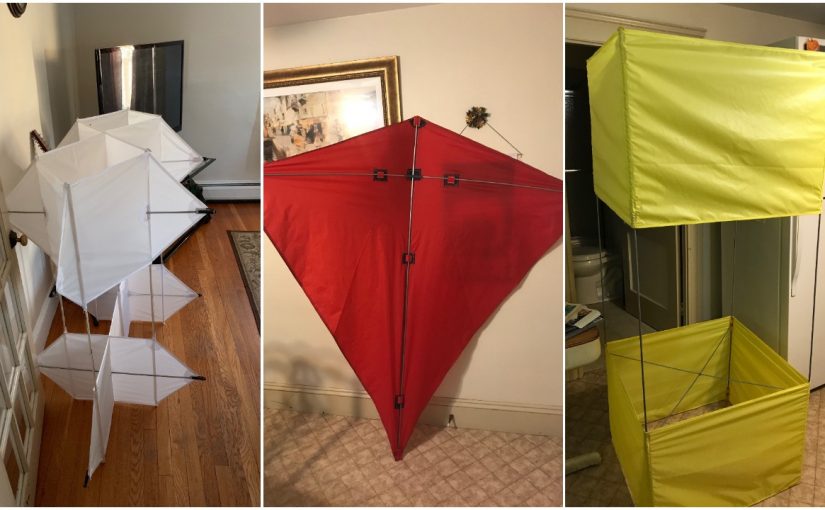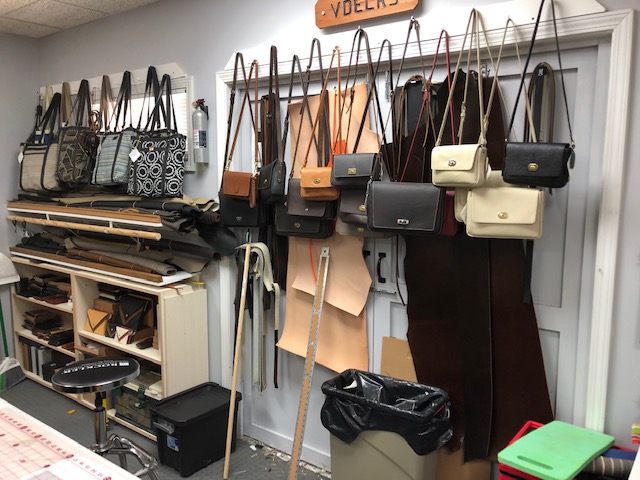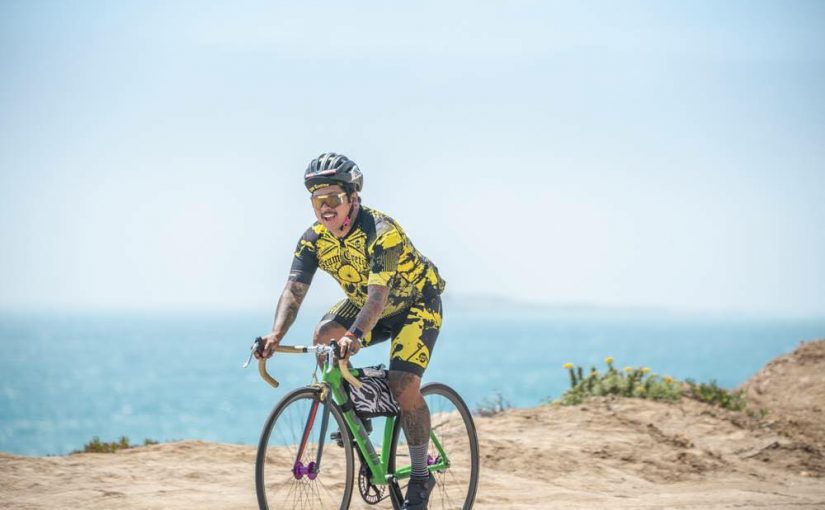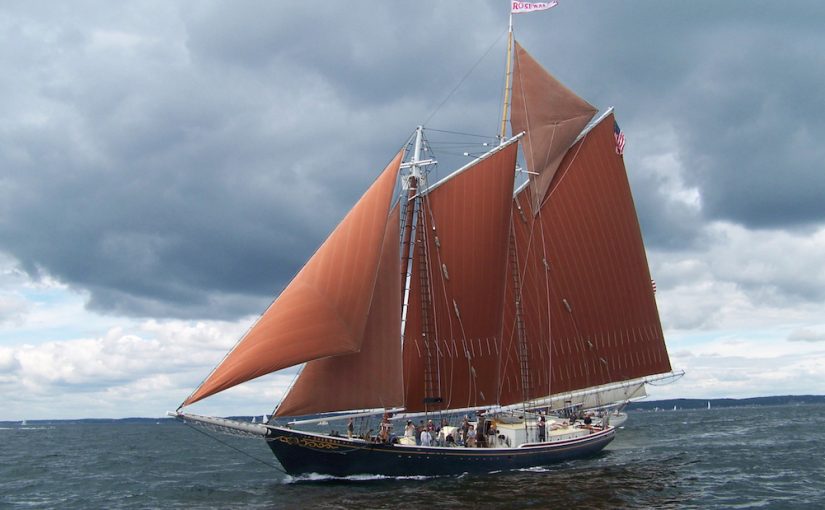Do you think about your carbon footprint? When you see trash or discarded items lying around, do you ever wonder if they could be turned into something useful again? Enoch Cincotta does. A self-starter and small business owner, he turns trash into treasure — literally. He takes discarded objects and trash from local businesses and uses the materials to create one-of-a-kind bags, wallets, backpacks, fanny packs and more. With the help of his Sailrite® Ultrafeed®, he’s doing his part to clean up his community and give a second life to the things we cast aside.
One Man’s Trash …
The idea to create usable items from trash came to Enoch when he was living in Miami Beach. At the time, he was making the occasional bag for friends and for himself. He was ordering his materials from suppliers and spending a lot of money in the process. Suddenly, everything clicked. “I realized that I wasn’t paying attention to how much waste was being generated by my artistic process — finding the material online, purchasing it, getting it in the mail two days later. It doesn’t make sense to me anymore.”
He was walking along the beach one day and noticed all the trash and discarded goods left behind. Things like inflatable pool toys and rafts, shade sail material and bicycle tubes were still in good condition but had been tossed aside. “Being a part of such a beautiful environment and noticing an immense quantity of trash left behind by the waves of tourists… I would find broken sun shades lying on the beach, the inconvenience of fixing them ultimately leading to them being discarded.” And so, an idea was born.
In Miami Beach, Enoch had “regular” dumpsters that he would scavenge. He’d sort through the trash and find usable items for his budding business. The process was tedious and time-consuming. “It would be a process of finding materials, cleaning them, and transforming them into something new. I like the ritualistic nature of the process and taking my time to appreciate the material for what it is. They just need a little love and patience to be transformed.”
When he relocated to Harrisburg, Pennsylvania, he found a more direct and cleaner way to obtain his sewing materials. Enoch initiated relationships with local businesses, making deals to procure the discarded materials before they made their way to the dumpster. This made the cleaning process much simpler and saved him a lot of time. He was also able to get a larger quantity of materials with the same amount of effort.

It’s in Harrisburg where his business really got off the ground and his business concept came to life. Enoch witnessed someone’s discarded plastic bag floating in the wind, and that’s how he came up with the name for his business: Reanimator Threadworks. He watched an otherwise lifeless object become transformed — reanimated if you will — into a moving, living thing. And that’s exactly what Enoch does. He takes lifeless, used up objects and reanimates them, giving them a second life and another purpose than what they were intended and created for. A torn sun shade becomes part of a backpack. An empty bag of coffee beans is transformed into a truly unique tote bag.
Sustainable Sewing Practices
Enoch learned to sew thanks to his mother’s teaching. A requirement of his homeschool curriculum, he started sewing as part of the home economics portion of his education. And now he’s taken that skill and turned it into not only a business but a way to do his part as an environmental advocate.

He sells his bags in local stores and hosts free sewing workshops at farmers markets. “The goal is to get out in the community and sew materials on the streets. The more people exposed to the power of sewing the more excited I get.” During the winter, when the farmers markets are closed, he collaborates with other environmental advocacy groups and hosts free sewing workshops for sewing panniers, bike bags, backpacks and more.
His bags are constructed using a wide variety of everyday materials. Everything from banners, inflatable rafts, bicycle inner tubes, parachute webbing, vinyl billboard material and more are transformed into “functional pieces of art,” as he calls them. It’s amazing the things you can sew with a little imagination and ingenuity. To sew through this wide range of materials, he needed a sewing machine that would be up to the challenge. And that’s where Sailrite came in.

“I learned about Sailrite while pouring through online forums for an industrial machine. I was intrigued by the Ultrafeed LSZ and its modular nature — one machine for a bunch of different applications.” Another big asset of the Ultrafeed is its portability, which comes in handy when Enoch takes the machine — which he has affectionately dubbed “Ol’ Blue” — on the road for conventions. “I’m taking Ol’ Blue with me on a bicycle tour packed in her carrying case, but at home, she’s hooked up to the Workhorse™ Servo Motor and Industrial Table. That kind of functionality makes it ideal for the lifestyle I live.” Recently, Enoch acquired the Monster® II Balance Wheel so he could sew without electricity at conventions and workshops, furthering his green lifestyle and the machine’s versatility.
What are Enoch’s impressions of his Ultrafeed now that he has sewn everything from billboard vinyl to parachute webbing with it? Enoch had this to say about his machine: “So far I really love the reliability of the machine. It has taught me a lot about the mechanics of sewing. I’ve spent so much time reading the manual and feel really comfortable with how it’s designed to be repaired in the field. It’s built to last — I don’t see that too much anymore.”

Leading by Example
Enoch is mindful of his own carbon footprint and does what he can to live a green lifestyle. “I really work hard to be aware of my environmental footprint. I ride bikes and am active in the community as much as I can be. To be as effective as possible you have to live in the way that you want the world to be — not forcing your ideals onto others.”

Part of his mission is bringing awareness of living a more resourceful and self-reliant lifestyle through sewing. He donates 30% of profits from the sale of his bags to teaching free sewing workshops and educational programs in Harrisburg. “I was a camp counselor for six years and that got me really excited about youth education. I see an opportunity to educate individuals in my community about being self-sufficient.”
He also teaches repair classes where he promotes hands-on learning opportunities. People can learn how to repair textiles and gear instead of throwing them away and buying new products. “When we are empowered to make and repair, we stop being consumers. And we start using our brains!” Next year, Enoch plans on traveling to schools — biking his sewing machine and materials, of course — to facilitate educational workshops. “I’ll be teaching kids not only how to sew but how to get creative with trash.” Teaching the next generation how to be resourceful and environmentally responsible, “that’s the future, the big time.”

“I like to think that when I interact with these materials I’m giving my energy to the object, transforming it into something that lives and breathes with a personality of its own. I see it as being more than just a transformation of an object, but also a transformation of an idea. By reanimating our garbage and repairing what is broken, we also reanimate our community — increasing self-sufficiency and resilience. That’s what I think is really important.”
Enoch’s drive and passion for upcycling is something all creatives can relate to. A big part of the DIY lifestyle is taking something and transforming it into something else. So, the next time you see trash on the side of the road or the next time you go to throw away an old sweater, an umbrella, a pair of ripped jeans, a pool toy, a beach ball … Stop and think, “Is there still a use for this item? What could this object become?” The possibilities are endless.
Who We Are
Sailrite is your one-stop DIY shop! We are a passionate crew of do-it-yourselfers who strive to equip you with the supplies and how-to knowledge you need to tackle your next project. Do you want to learn upholstery, leatherwork, canvaswork, hobby sewing, bag making or more? We have the fabric, tools, hardware, sewing machines and notions you need to master any DIY. And even if you’ve never sewn before, our tutorials and how-to videos are designed for beginners and experienced crafters alike.
Start your DIY journey today: www.sailrite.com

